
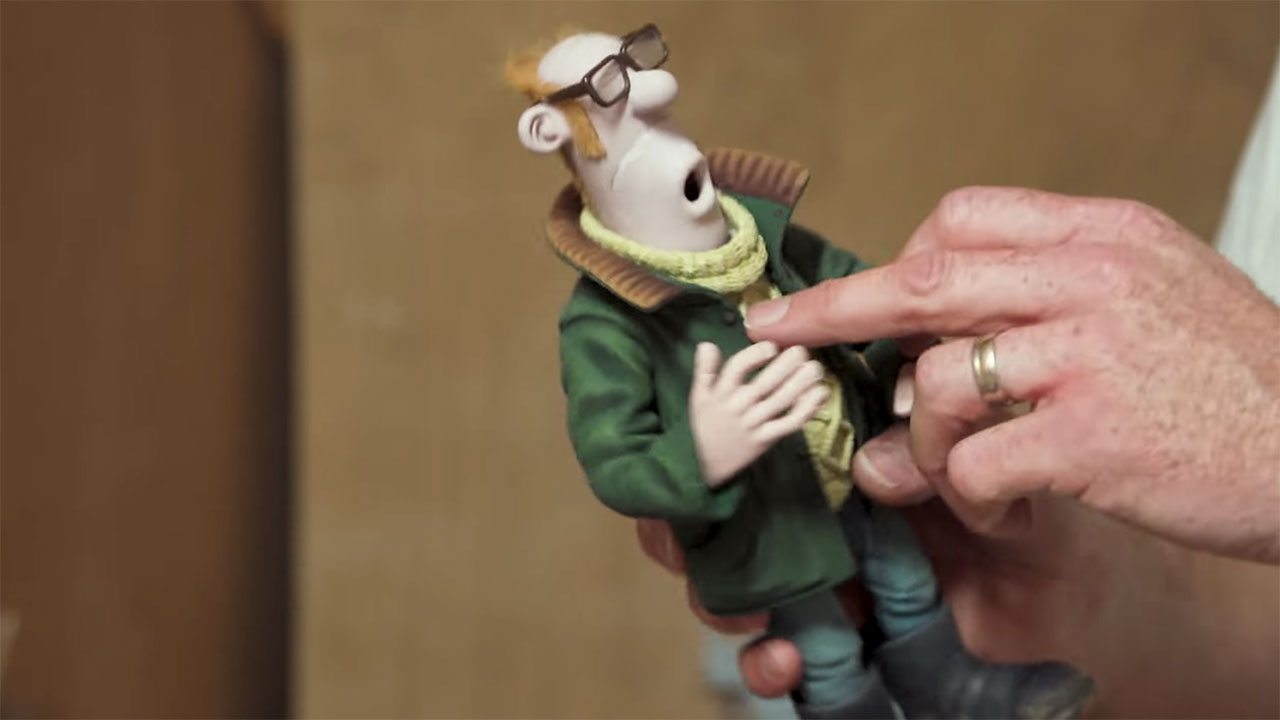
© Aardman Animations Ltd
Today, there are several types of animation, including 2D animation, 3D animation, flash animation, motion graphics, motion capture, and stop motion. Because newer mediums — such as 3d — have made the animation process much easier, stop motion animation has slowly become less and less popular. As of 2021, stop motion can be seen in some TV shows, advertisements, and in a very small number of feature films. In this article, you will read about the process of stop motion animation, as well as tips to help you create better animations.
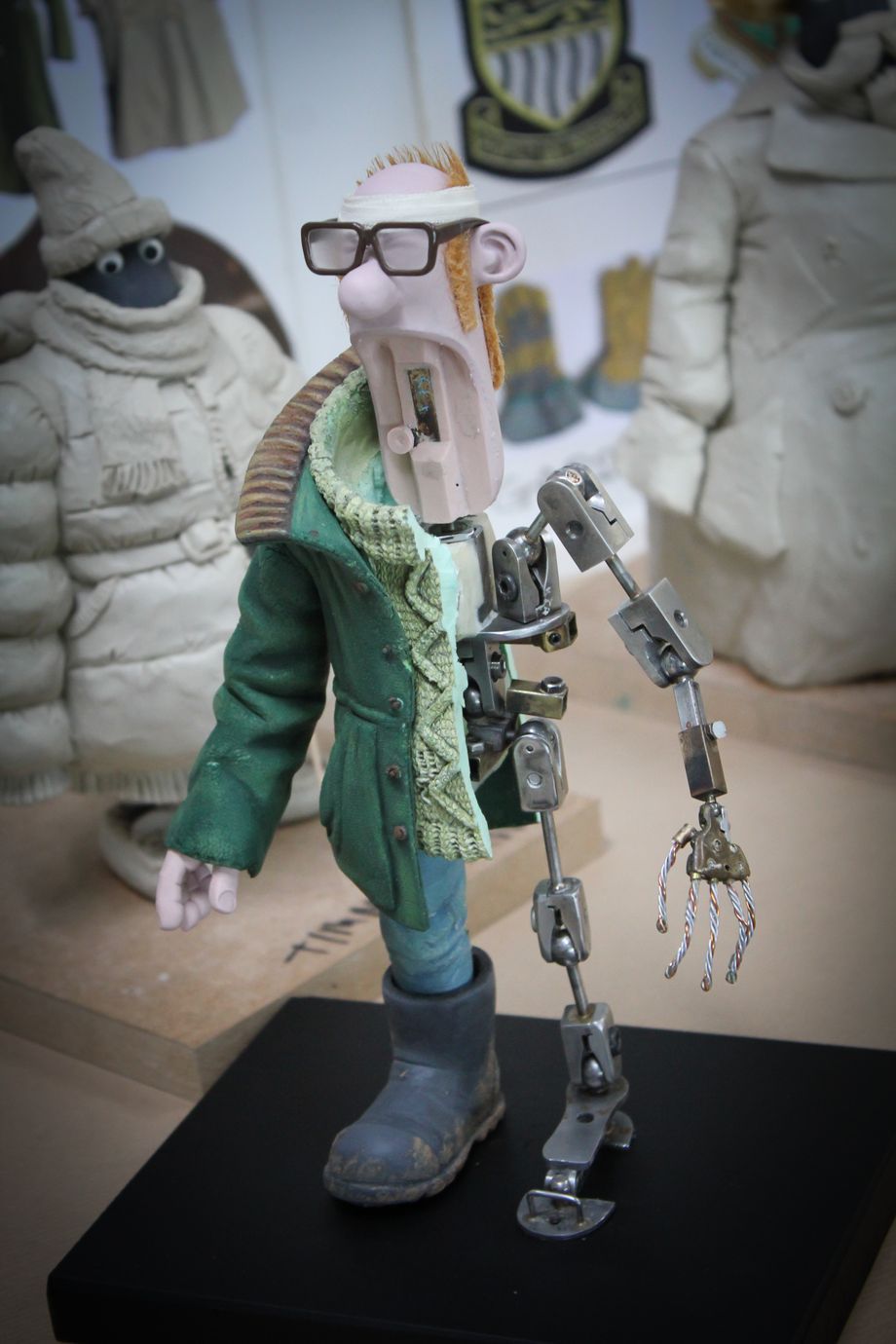
A Farmer puppet from 'Shaun the Sheep.' © Aardman Animations Ltd
No matter which form of animation you use, you must have a storyboard first. This allows the animators to visualize the concept first, and it also serves as an animator's "blueprint." After storyboarding the story, character designers must draw several versions of the same character in order to choose the best one. Once the design is chosen, an armature must be created. Armatures are basic skeletons for stop motion puppets, and they are usually made from aluminum. After that, the actual puppet exterior is created. The puppet can be made using anything. One of the most common materials used is Plasticine or silicone. Because several puppets of the same character are needed throughout the production, molds of the character must be produced in order to keep your character's shape consistent.
Stop motion animation is all about incrementally moving the character to create the illusion of motion. After each pose, the animator snaps a photo. That's all there is to the animation process. One minute could take up to two week to shoot! This is because there are 24 frames in a second on average. This means that (depending on the workflow) there are about 1440 unique stills in one minute. Even though the process itself is very complex and challenging when you're physically doing it, there really isn't that much to explain.
Stop motion puppets and props exist in the real world. If you want to animate a running or jumping scene, it would be impossible to suspend your character in the air in order to snap a photo. That's where rigs come in. Rigs are almost always made of metal, and they help support a character on the stop motion set.
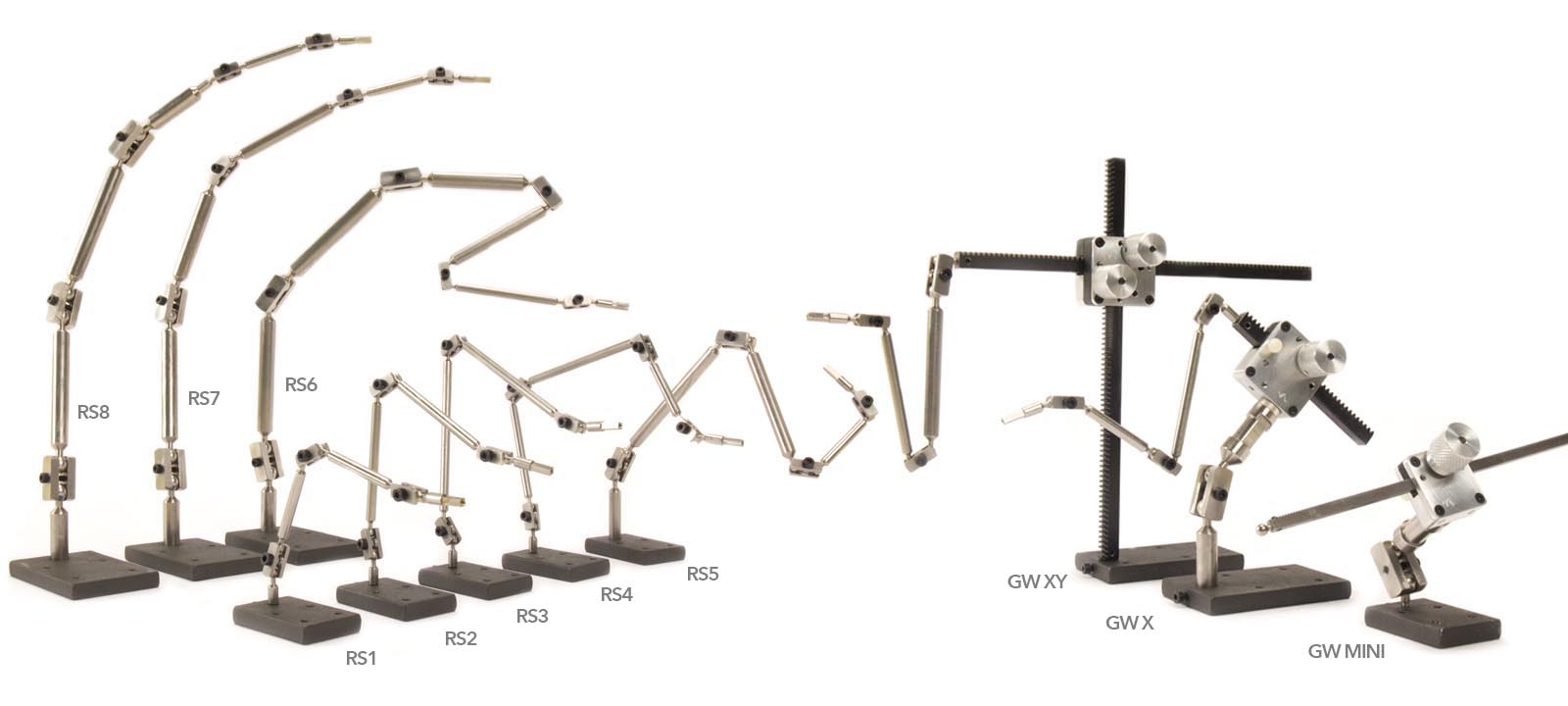
There are several types of stop motion rigs, such as armature rigs (left) and winder rigs (right). © Kinetic Armatures
Stop motion rigs are attached to characters almost 80-90% of the time. This is because characters' weights are usually uneven as they move, so there must be something to support them. Although studios always use professional rigs, those looking for a cheaper alternative can make DIY rigs using anything they want. In the video below, I used anything sturdy as a 'rig' — from wooden shish kebab skewers to Q-tips to wire hangers ... even my own hand! Of course, the rigs are all removed during the post-production stage.
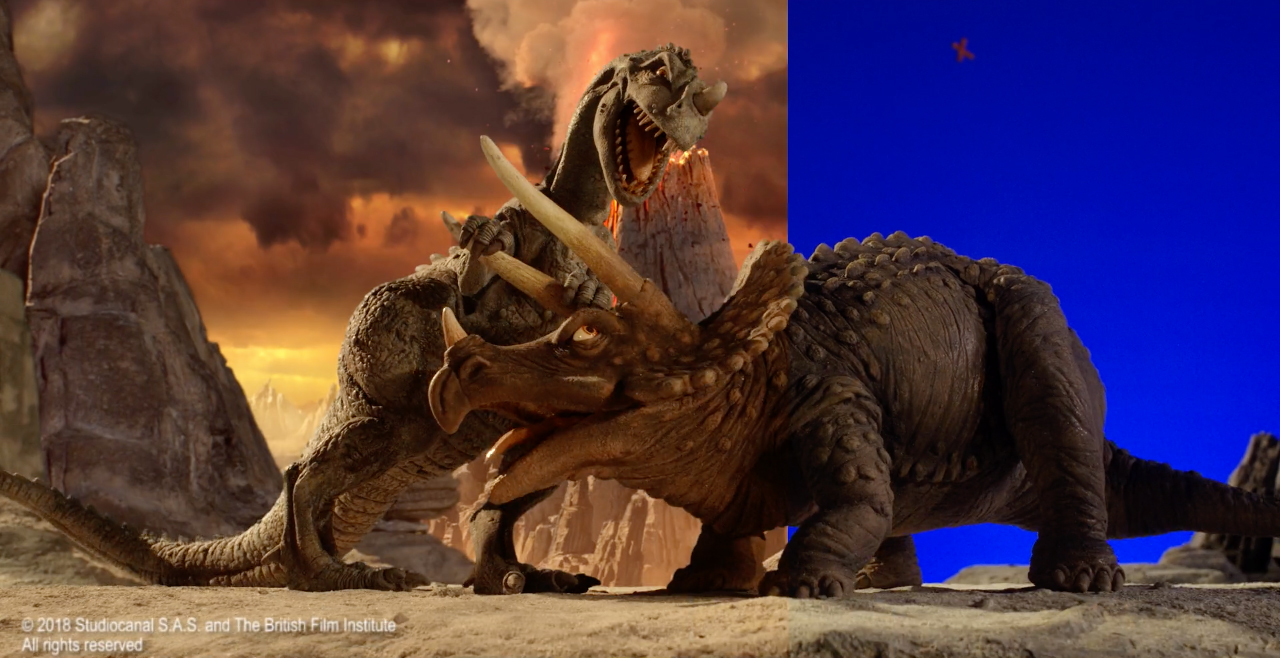
A frame before and after removing blue screen. © Aardman Animations Ltd/StudioCanal
Disregarding sound editing and similar post-production processes, this is the final step in creating an animation. Post-production usually involves editing individual frames. Editors try to remove any flicker, and — most importantly — erasing rigs. To erase stop motion rigs, animators must have taken a photo of the background without any characters. After that, editors would layer the background shot and the one with the characters and erase the rig from the top layer. A similar technique is employed when removing green screens/chroma keys and replacing them with proper backgrounds. During the post-production stage, vfx are added as well. Sometimes, such effects are stop motion animated, but they're usually CG effects (mainly because it's cheaper and easier). After that, the images are all compiled into a single film, playing 24 frames per second.
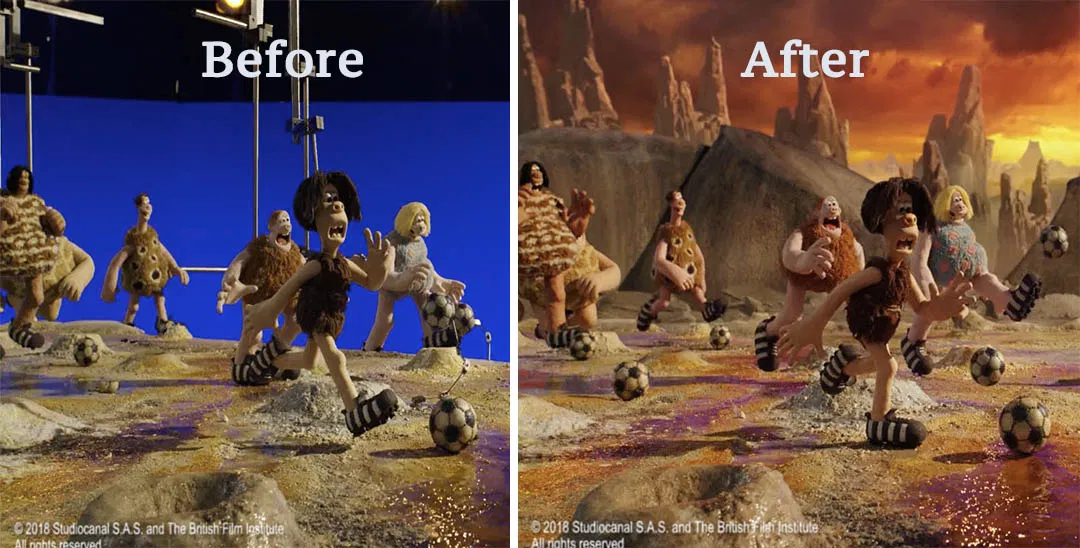
A frame before and after removing rigs and blue screen. © Aardman Animations Ltd/StudioCanal
| No. | Tip |
|---|---|
| 1 | Avoid moving or bumping into the camera |
| 2 | Stick your tripod to the ground using sticky tack |
| 3 | Animate more frames than you need, just in case |
| 4 | Always use a rig |
| 5 | Animate to the frame rate |
| 6 | Always try to finish a scene in one sitting |
| 7 | Don't forget to animate a blink every 3-4 seconds |
| 8 | Try not to bump into any objects that are part of your set |
| 9 | Always animate using onion skinning |
| 10 | Always set your camera settings to 'manual' |